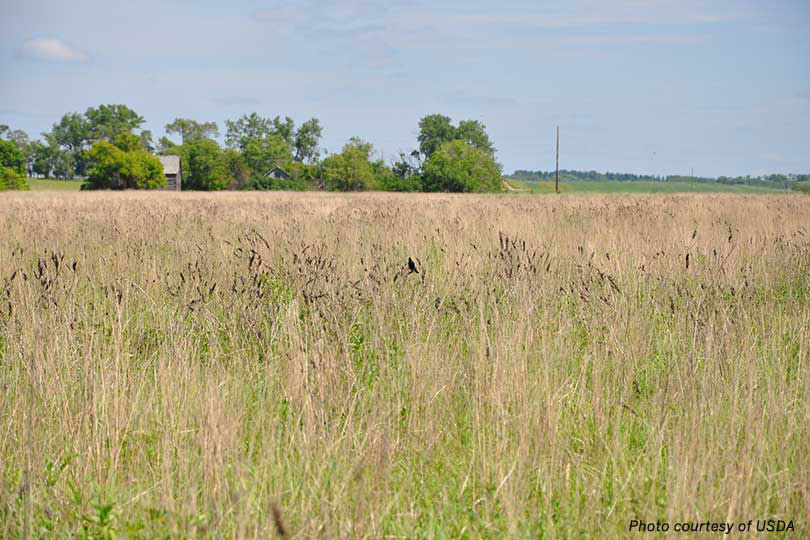The U.S. Department of Agriculture (USDA) is enrolling nearly 2.7 million acres for farmers, ranchers and private landowners through the agency’s Grassland Conservation Reserve Program (CRP).
The agency received a record setting signup of 4.6 million acres in offers.
This working lands program allows farmers, ranchers and landowners to continue grazing and haying practices while protecting grasslands and further the CRP’s impacts.
“This year’s Grassland CRP signup demonstrates the continued popularity, success and value of investments in voluntary, producer-led, working lands conservation programs,” said Zach Ducheneaux, administrator of USDA’s Farm Service Agency (FSA). “Grassland CRP clearly demonstrates that conservation priorities and agricultural productivity not only have the capacity to coexist but also complement and enhance one another. Through all our working land conservation programs, farmers and ranchers play a critical role in helping secure the future of both our food production and our natural resources.”
USDA accepted fewer acres and a lower percentage of offers than in 2022 because the program has reached its acreage cap, Ducheneaux noted.
“With a low number of acres expiring in 2024 and 2025, getting any closer to the statutory cap of 27 million acres would hinder USDA’s ability to conduct meaningful future signups or to implement existing and new Conservation Reserve Enhancement Partnership (CREP) agreements in 2024.”
Grassland CRP leverages working lands practices to improve biodiversity and conserve environmentally sensitive land.
To target conservation in key geographies, USDA prioritizes land within two National Priority Zones: the Greater Yellowstone Ecosystem and the Dust Bowl area.
Building upon the nearly 2.4 million acres already in the priority zones, this year’s more than 900,000 acres continues to robustly demonstrate that producers in these areas recognize the keen conservation value of Grassland CRP. Land enrolled in these zones will contribute to broader USDA conservation efforts through Working Lands for Wildlife by conserving working grasslands and other lands that underpin iconic big game migrations.
Grasslands enrolled in CRP help sequester carbon in vegetation and soil, while enhancing resilience to drought and wildfire. Meanwhile, producers can still conduct common grazing practices, such as haying, mowing or harvesting seed from the enrolled land, which supports agricultural production.
Top states for this year’s Grassland CRP signup include:
- Colorado, at 430,899 acres;
- Nebraska, at 417,865 acres; and
- South Dakota, at 325,443 acres.
In addition to the Grassland signup, FSA also has accepted more than 1 million acres through the General signup, and more than 465,800 acres have been submitted through the Continuous CRP signup so far this year, on pace to be similar to last year’s nearly 900,000-acre enrollment.
Farmers, ranchers and private landowners can still make an offer to participate in CRP through the Continuous CRP signup, which is ongoing, by contacting FSA at the local USDA Service Center.

